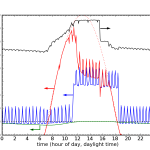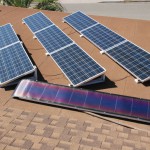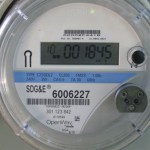[An expanded treatment of some of this material appears in Appendix section D.3 of the Energy and Human Ambitions on a Finite Planet (free) textbook.]

Electric Car: They Might Be Giants
Some time ago, the Chevy Volt attracted my attention. I think the plug-in hybrid concept hits the sweet spot for American drivers, and the Volt’s 35–40 mile electric-only range seemed to be the perfect number. A pure electric vehicle (EV) would not permit my wife’s periodic work-related jaunt to Pasadena, so any battery-powered solution for us must be of the plug-in hybrid electric vehicle (PHEV) variety. The problem, ultimately, was the high price tag (and the hump in the middle of the back seat occupied by the battery). Although I don’t self-identify as being in the “upper class,” our income edges us into the top quintile in the U.S. So for us to decide that the Volt costs too much—despite genuine enthusiasm—seemed to spell trouble (indeed, the average income of Volt owners was claimed to be $175,000). My conclusion was that electric/plug-in cars are out of reach, and could well remain so.
In April of this year, I became aware of the Ford plug-in, called the C-Max Energi (yes, with an “i” at the end!). The C-Max Energi has a 21 mile electric-only range, and gets an EPA rating of 43 miles per gallon (2.3 gal/100 mi; or 5.4 L/100 km). The price tag is approximately $6k cheaper than the Volt, and the back seat passed my wife’s approval. Nonetheless, after carefully considering the C-Max Energi as a replacement for our increasingly ailing car, we decided against springing for one: still too expensive. I was all set to write a Do the Math post to the tune of “Almost bit on a PHEV again.”
But the fact remained that our 11-year old 28 MPG car (bought used) has been costing us a fair bit in maintenance, its reliability increasingly dubious. Replacement loomed. Motivated by an upcoming long-haul road trip, we explored options again, looking at hybrids and the C-Max Energi. In the end—aided by a federal tax credit, a California rebate, and an unfathomably good offer that together knocked $9k off the MSRP—we drove an Energi off the lot under battery power.
It turns out that:
- the lifetime cost for the PHEV is still higher than other options we considered, but not prohibitively so given credits, rebates, and discounts;
- the CO2 emissions are cut in half in electric mode (considering upstream electricity production in our region);
- batteries still stink compared to liquid fuel, and likely always will.
Continue reading →
Views: 13088
 A colleague pointed me toward an article in the LA Times last week, which lays out a plan to remove financial incentives legally bestowed on solar photovoltaics (PV) to the detriment of utility power companies. The plan is spearheaded by the Koch brothers and their political action group, Americans for Prosperity.
A colleague pointed me toward an article in the LA Times last week, which lays out a plan to remove financial incentives legally bestowed on solar photovoltaics (PV) to the detriment of utility power companies. The plan is spearheaded by the Koch brothers and their political action group, Americans for Prosperity.





